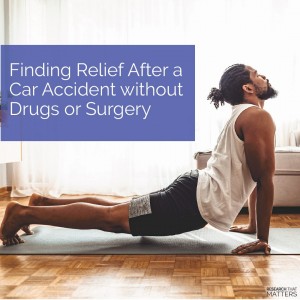
Bottom Line:
Screech. Bam. Uh-oh… you’ve been involved in a car accident. Your day has been thrown upside down, and a million thoughts are racing through your head.
If you don’t feel immediate pain, you may be tempted to think you don’t have a problem – but waiting too long to seek care has been shown to increase the chances you’ll need more aggressive intervention later.
With the stress of an accident, calling the insurance company, getting a car repaired, etc. – it’s not uncommon for people to make the mistake of putting their health and well-being last on the to-do list.
Why it Matters:
Taking the right action steps as quickly as possible after a car accident can make a huge difference in your overall health and healing.
Without a proper diagnosis and treatment, your body may begin to “heal” with more scar tissue than necessary. What’s more, trying to live “around” your injuries can cause additional stress on other parts of your body, which can lead to additional injuries.
Research has shown that active care involving range of motion, mobility, and strengthening exercises can effectively reduce pain.
To give yourself the best chance to find relief without the need for drugs or surgery, we recommend 3 simple steps…
- Get an evaluation – a complete evaluation can provide you with an accurate diagnosis and treatment plan.
- Begin receiving care – after reducing inflammation, movement-based techniques are often recommended to help you regain your quality of life.
- Stay consistent – getting well is a process and staying consistent with your care will help you to heal as quickly as possible.
Next Steps:
There’s no way around it – auto accidents aren’t fun.
However, with the right healthcare team, you can get back to your full life and activities without the need for drugs or surgery.
The key is in sticking to the 3 steps above.
This simple plan will give you the best chance to get well quickly and stay well for years to come!
Science Source(s):
The Effectiveness of Conservative Management for Acute Whiplash Associated Disorder (WAD) II. PLOS One. 2015.
